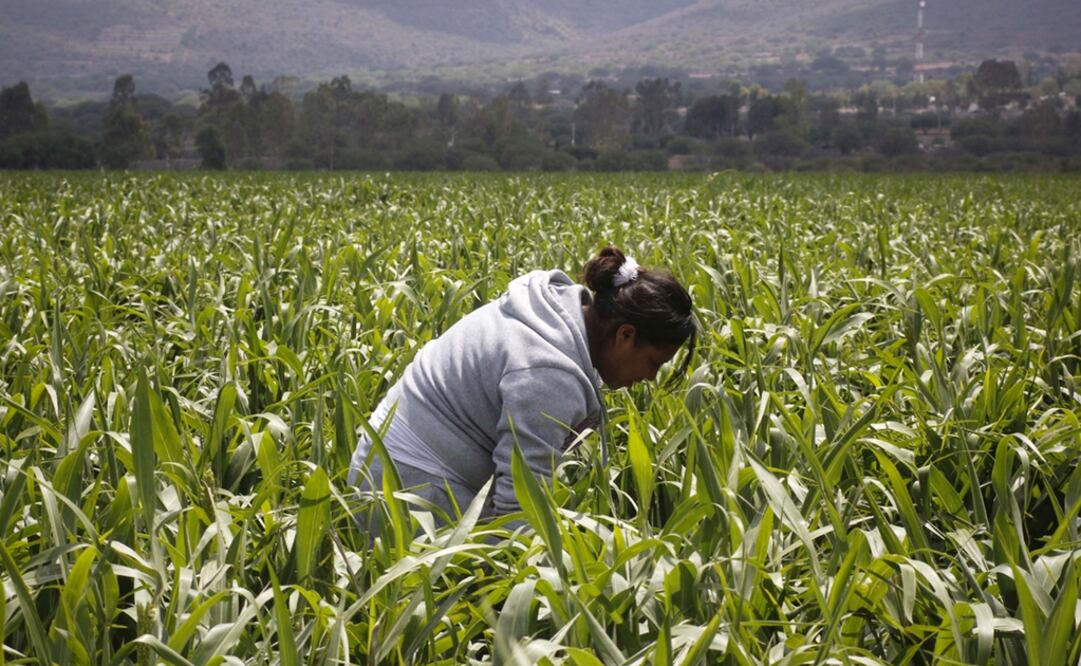Más Información

En SLP nunca ha existido una gobernadora y ahora hay una posibilidad real que así sea, asegura Ricardo Gallardo tras aprobación de "Ley Esposa"

Morena analiza disminución de pluris y elección popular de consejeros del INE: Monreal; serán revisadas en la reforma electoral, dice

Rastro de jets vinculados al narcotráfico lleva a un vendedor en California… y a un punto ciego de la regulación aérea en Estados Unidos

Secretaría Anticorrupción sanciona a dos empresas por buscar contratos con información falsa; imponen multa de miles de pesos

Banxico se despide de 2025 con otro recorte a la tasa de interés; queda en 7% por ajuste de 25 puntos base
According to Mexico’s National Agrarian Record (RAN) , out of 4.9 million people in the country who own agrarian units, more than 3.6 million are men , while only 1.3 million are women , the latter of which represents 26.3% of the total. In other words, out of every 10 people with land rights, less than three are women.
This is particularly serious considering that around 51% of the national territory is socially owned.
In the opinion of Anabel López Sánchez, former head of the Oaxaca Women’s Institue , the denial of agrarian rights to women must be understood as “an abismal structural inequality” that leaves woman vulnerable to several problems in the agricultural trade, which is not very different from what is happening in the housing sector. Only 3 out of every 10 women are homeowners .
“Women’s rights to property remain a major problem. Ever since the Mexican government passed a reform to the Land Law in 1992 , men are the only permissible holders of land rights,” stated López Sánchez.
According to the specialist, before said year, land rights were granted to the entire family, and each family member had power over the agrarian unit. The agrarian reform sought to end the social nature of goods by giving men full rights to the use, enjoyment, and succession of property.
Basically, there are only three ways in which a woman can access land rights and own a plot of land : First, if they inherit the land from its original male owner, most often the woman’s father or husband; second, if the woman decides to acquire it by her own means, though the ownership must be acknowledged by the landholders assembly, which is usually made up of a majority of men; and third, if said assembly grants a woman rights to a plot of land.
“Women farmers produce much of Mexico’s food, though they have no rights over the land they farm,”
stated the specialist.
Furthermore, there is no data on the amount of women farmers that are part of indigenous communities at the national level, though in the state of Yucatán , which has a population that is predominantly Mayan, barely 12.4% of landowners are women.
Other entities that have shown a particularly low percentage of women landowners are: Campeche (19.4%), Quintana Roo (20.6%), and Nuevo León (20.7%) . Oaxaca showed a relatively high percentage (28%), though this is mostly due to other factors such as migration.
In 2016, a new Land Law dictated that both men and women should be taken into account at landholders assemblies in a 40:60 proportion. However, Mexico still lacks public policies aimed at overcoming this inequality issue.
dm
Noticias según tus intereses
[Publicidad]
[Publicidad]









